Many homeowners assume that their homeowner’s insurance policy will cover all types of damage, including flood damage. However, this is not always the case. Standard homeowner’s insurance policies typically do not cover damage caused by floods.
Flood insurance is a separate type of insurance that provides protection specifically for flood damage. It is important to have both homeowner’s insurance and flood insurance to ensure that you are fully protected in case of a flood.
What is Homeowner’s Insurance?
Homeowner’s insurance is a type of insurance policy that provides protection for your home and personal property. It offers coverage for damages and losses incurred due to fire, theft, vandalism, and some natural disasters. Homeowner’s insurance policies vary in coverage and cost, and often include liability coverage as well.
It is important to note that homeowner’s insurance does not typically cover damage caused by floods, which is where flood insurance comes in. Homeowner’s insurance also does not cover routine maintenance issues or damages caused by neglect.
What is Flood Insurance?
When it comes to protecting your home from natural disasters, it’s important to understand the differences between homeowner’s insurance and flood insurance. While homeowner’s insurance typically covers damage caused by things like fire, theft, and certain types of water damage, flood insurance is specifically designed to protect against losses resulting from floods.
What Does Flood Insurance Cover?
Flood insurance covers a wide range of losses resulting from flooding, including:
| What’s Covered | What’s Not Covered |
|---|---|
| Damage to your home’s structure and foundation | Damage caused by moisture, mold, or mildew that could have been avoided |
| Damage to electrical, plumbing, and HVAC systems | Damage to your personal property that isn’t directly related to the flood |
| Costs of removing debris and mud from your home and property | Losses resulting from business interruption or loss of use of your home |
| Expenses related to temporary housing and relocation | Outdoor property such as trees, plants, and landscaping |
Do I Need Flood Insurance?
Whether or not you need flood insurance depends on a variety of factors, including where your home is located and how likely it is to experience flooding. Homes located in high-risk flood zones are often required to have flood insurance, but even if you don’t live in a high-risk area, it’s a good idea to consider purchasing a flood insurance policy to protect your home.
It’s important to note that if you rely solely on your homeowner’s insurance policy to cover flood damage, you may be at risk of significant financial losses. Most homeowner’s insurance policies do not cover flood damage, so it’s important to have a separate flood insurance policy to ensure that you are fully protected.
Do Homeowner’s Insurance Policies Cover Flood Damage?
Many homeowners assume that their homeowner’s insurance policy will cover flood damage, but this is not always the case. While some policies may offer limited coverage for certain types of water damage, they typically do not cover damage caused by floods.
Flood damage is often excluded from homeowner’s insurance policies because it is considered a separate, high-risk type of damage. Homeowner’s insurance policies are designed to provide coverage for damage that is sudden and accidental, such as a burst pipe or a tree falling on your house. Flood damage, on the other hand, is usually the result of a slow, steady accumulation of water over time, and is commonly associated with natural disasters like hurricanes and heavy rainfalls.
If you live in an area that is prone to flooding, it is important to purchase a separate flood insurance policy to ensure that you are fully protected. Depending on where you live, flood insurance may be required by your mortgage lender or the federal government.
What Are the Benefits of Having Both Homeowner’s Insurance and Flood Insurance?
While homeowner’s insurance provides essential protection for your home, it typically does not cover flood damage. Flood insurance is a separate policy that offers coverage specifically for floods. Combining both types of insurance can provide comprehensive protection for your home.
Protection from Different Types of Damage
Homeowner’s insurance typically covers damage from events like fire, theft, and certain types of water damage (such as a burst pipe). However, it generally does not cover damage caused by floods. By having both homeowner’s insurance and flood insurance, you can ensure that you are protected from different types of damage that could occur to your home.
Peace of Mind
Knowing that you have comprehensive coverage for your home can give you peace of mind. You won’t have to worry about the financial burden of repairing your home in the event of a flood or other covered event. This can allow you to focus on what’s most important – keeping your family safe.
Compliance with Lender Requirements
If you have a mortgage on your home, your lender may require you to have flood insurance if you live in a high-risk flood zone. Having both homeowner’s insurance and flood insurance can ensure that you are compliant with your lender’s requirements.
Cost Savings
While flood insurance is an additional expense, it can save you money in the long run. Without flood insurance, you could be responsible for paying for the full cost of repairing your home after a flood. By paying for flood insurance, you can minimize your out-of-pocket costs and save money in the long run.
Overall, having both homeowner’s insurance and flood insurance can provide comprehensive protection for your home and give you peace of mind. Contact your insurance provider to find out how you can obtain both types of coverage.
How Much Does Flood Insurance Cost?
The cost of flood insurance can vary based on a number of factors. These factors can include the level of coverage you need, where your home is located, and the risk level in your area. On average, flood insurance costs about $700 per year, but this can range from $300 to $1,500 per year.
Factors That Affect the Cost of Flood Insurance
There are several factors that can impact the cost of your flood insurance policy, including:
- Your home’s location and flood zone risk level
- The amount of coverage you need
- The age and construction of your home
- Your deductible amount
It’s important to keep in mind that the cost of flood insurance can increase if you live in a high-risk flood zone. However, even if you live in a low or moderate-risk zone, flooding can still occur, making it important to consider purchasing flood insurance.
Average Cost of Flood Insurance for Different Coverage Levels
The following table provides some average cost estimates for flood insurance based on different levels of coverage:
| Level of Coverage | Average Cost per Year |
|---|---|
| $20,000 building and $8,000 contents coverage | $300 – $400 |
| $50,000 building and $20,000 contents coverage | $450 – $600 |
| $75,000 building and $30,000 contents coverage | $600 – $800 |
| $100,000 building and $40,000 contents coverage | $700 – $900 |
Remember, these are just average estimates and the actual cost of your policy may vary based on your individual needs and circumstances.
How Do I Know If I Need Flood Insurance?
Not all homeowners need flood insurance, but it is important to assess your risk of flood damage to determine if it is necessary. If your home is located in a high-risk flood zone, then flood insurance may be required by your mortgage lender. However, even if you are not required to have flood insurance, it may still be a wise investment to protect your home.
There are several factors that can increase your risk of flood damage, including proximity to bodies of water, elevation, and historical flood patterns in your area. You can check your home’s flood risk by visiting the FEMA Flood Map Service Center website.
How Do I Know If I’m Located in a High-Risk Flood Zone?
To determine if your home is located in a high-risk flood zone, you can check the FEMA Flood Map Service Center website. Simply enter your address, and the website will provide you with information about your flood risk. If your home is located in a high-risk flood zone, then flood insurance may be required by your mortgage lender.
It is important to note that even if your home is not located in a high-risk flood zone, it can still be at risk for flood damage. In fact, more than 20% of flood claims come from homes located outside of high-risk flood zones. Therefore, it is important to consider your individual situation and assess your risk of flood damage.
How Do I Purchase Flood Insurance?
If you have determined that you need flood insurance, the next step is to purchase a policy. You can purchase flood insurance through the National Flood Insurance Program (NFIP) or through a private insurance company.
National Flood Insurance Program (NFIP)
The NFIP is a federal program that provides flood insurance to homeowners, renters, and business owners in participating communities. To purchase a policy through the NFIP, you can contact your insurance agent or visit the NFIP website.
When purchasing a policy through the NFIP, you can choose between two types of coverage: building property coverage and personal property coverage. Building property coverage covers the physical structure of your home, while personal property coverage covers your belongings inside the home.
Private Insurance Companies
In addition to the NFIP, you can also purchase flood insurance through a private insurance company. Private insurance companies may offer more flexible coverage options and higher coverage limits than the NFIP.
To purchase flood insurance through a private insurance company, you can contact an insurance agent or search for policies online. It’s important to compare policies and rates from multiple insurance companies to find the best coverage and price for your needs.
Note that if you choose to purchase flood insurance through a private insurance company, the policy may not be backed by the federal government like NFIP policies are.
What Should I Do if My Home is Damaged by a Flood?
If your home has been damaged by a flood, it can be a stressful and overwhelming experience. However, it is important to take immediate action to protect your property and ensure that you receive the compensation you deserve. Here are the steps you should take:
-
Ensure your safety: The first priority is to ensure your safety and that of your family. If you have to leave your home, turn off all utilities and appliances, and disconnect any electrical equipment to avoid the risk of electrocution.
-
Contact your insurance providers: Contact both your homeowner’s insurance and flood insurance providers as soon as possible to report the damage. Provide them with a detailed description of the damage, including photographs or videos if possible.
-
Document the damage: Take detailed photographs or videos of the damage to your home and personal belongings. This documentation will be important when filing your insurance claim.
-
Make temporary repairs: Make temporary repairs to prevent further damage to your property. Cover any broken windows or holes in your roof to prevent further water damage. Keep receipts for all expenses related to these repairs, as they may be reimbursable by your insurance provider.
-
Wait for an adjuster: An insurance adjuster will be sent to your property to assess the damage and determine the amount of compensation you are entitled to. Be patient and cooperative during this process, and provide the adjuster with any documentation or information they request.
-
Review your policy: Review your insurance policy to determine what is covered and what is not. Make sure you understand your deductible and any limitations or exclusions in your policy.
-
File your claim: Once you have documented the damage and received an assessment from the insurance adjuster, file your insurance claim as soon as possible. Follow up with your insurance provider regularly to ensure that your claim is being processed in a timely manner.
FAQ
Q: Does homeowner’s insurance cover flood damage?
A: Generally, homeowner’s insurance policies do not cover flood damage. It is important to have a separate flood insurance policy to ensure that your home is fully protected.
Q: What does flood insurance cover?
A: Flood insurance typically covers damage to your home and personal belongings caused by a flood. This can include damage from heavy rain, coastal storm surges, and overflowing bodies of water.
Q: How much does flood insurance cost?
A: The cost of flood insurance varies depending on several factors, including the location of your home, the level of coverage you choose, and your home’s risk of flooding. On average, flood insurance costs about $700 per year, but it can be more or less depending on your specific circumstances.
Q: Can I purchase flood insurance if I don’t live in a high-risk flood zone?
A: Yes, you can purchase flood insurance even if you do not live in a high-risk flood zone. In fact, many floods occur in areas that are not considered high-risk, so it is important to consider purchasing flood insurance regardless of where you live.
Q: How do I know if I need flood insurance?
A: You can determine if you need flood insurance by assessing your home’s risk of flood damage. This can include considering factors such as your home’s location, history of flooding in the area, and proximity to bodies of water.
Q: Can I purchase flood insurance and homeowner’s insurance from the same company?
A: Yes, many insurance companies offer both homeowner’s insurance and flood insurance. Bundling these policies together can often result in lower overall costs and streamline the claims process.
Q: What should I do if my home is damaged by a flood?
A: If your home is damaged by a flood, it is important to file a claim with your flood insurance provider as soon as possible. You may also need to file a separate claim with your homeowner’s insurance provider if applicable.
Q: Are there any exclusions to flood insurance coverage?
A: Yes, there are some exclusions to flood insurance coverage, including damage caused by earthquakes, landslides, and sewer backups. It is important to review your policy carefully to understand what is and is not covered.









